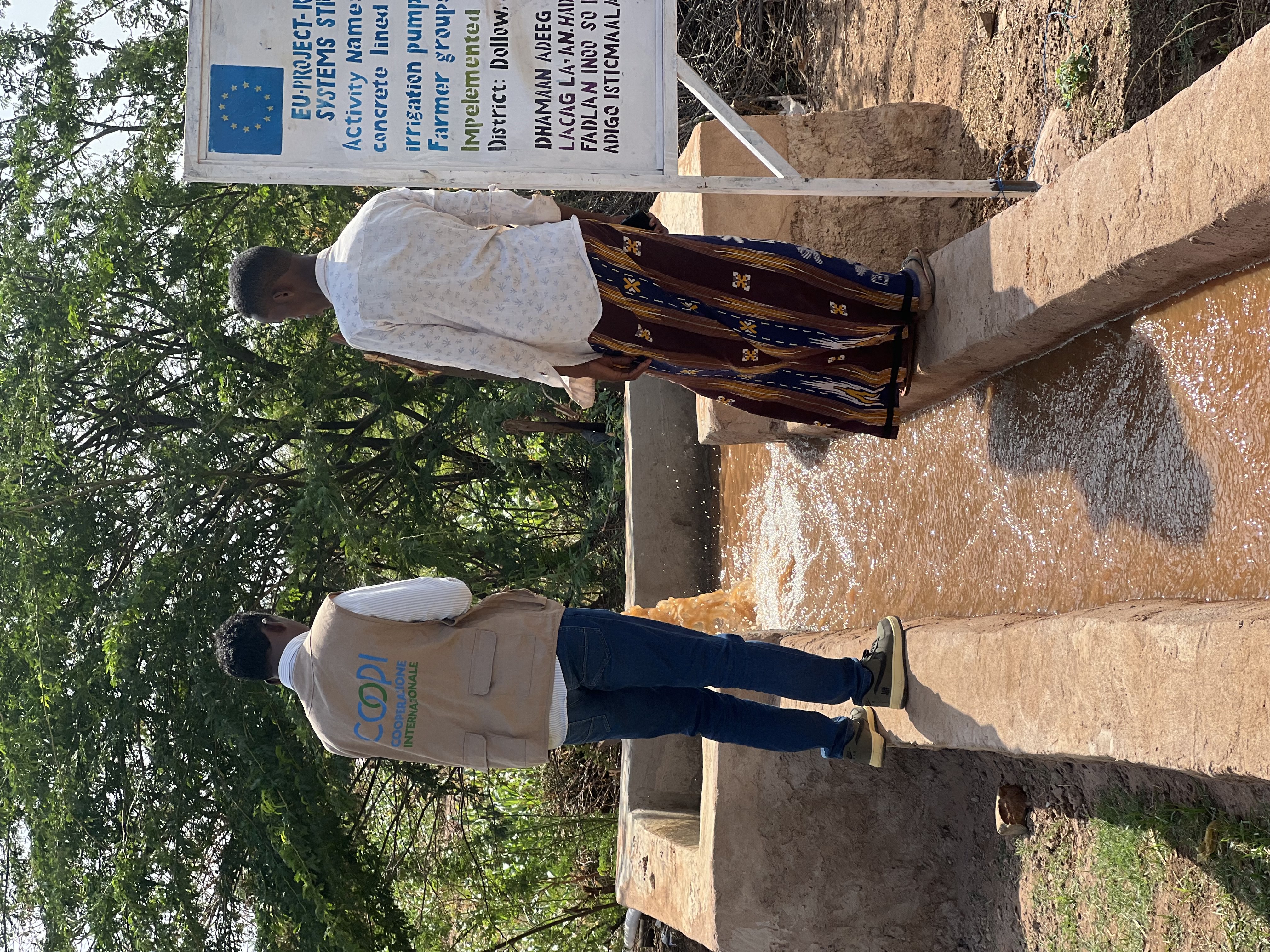21-07-2025 | di COOPI
From drought to abundance: Somalia’s solar canals
Bullo Qalooc, an Agro-pastoralist village nestled in the Dollow district of Somalia, is home to a cohesive community of resilient farmers and herders. For generations, the people of Bullo Qalooc have practiced a mixed livelihood strateg: blending small-scale subsistence farming with livestock rearing, particularly goats and sheep. Yet, their survival has always hinged on one fragile pillar: irrigation.
Historically, agriculture in the village depended almost entirely on seasonal rains, leaving farmers vulnerable to frequent crop failures and chronic food insecurity, especially during recurrent droughts. Livestock herds suffered too, as water scarcity forced families to undertake long, arduous migrations in search of pastures and watering points.
Among these farmers was Abdirashid Ibrahim Abdi, a 35-year-old father of four. Like many in his village, Abdirashid struggled with low crop yields, largely due to deteriorated earthen irrigation canals, which were vital but ineffective. His role as a sharecropper, reliant on landowners, made his situation even more precarious. The skyrocketing cost of fuel for irrigation pumps only worsened his burden. There were days when his children went to bed hungry, and the shadow of hunger haunted their home.
But in 2024, The Somali Resilience Program, in partnership with COOPI – Cooperazione Internazionale and funded by the European Union (EU), launched the Riverine & Pastoral Food System Strengthening (RFSS) project, a transformative initiative designed to address the region's most pressing agricultural challenges. Bullo Qalooc was identified as one of the priority areas, and a new chapter began for its people.

Through this intervention, COOPI provided Good Agricultural Practices (GAP) training, equipping local farmers, such as Abdirashid, with modern and sustainable farming knowledge. But the most groundbreaking changes came in the form of concrete canal construction and the installation of solar-powered irrigation systems, a breakthrough for the village.
The concrete canals revolutionized water management in the village. Unlike the old earthen channels, these durable structures minimize water loss and ensure equitable distribution among farmers. This efficiency has reduced labor, allowing farmers to focus more on production.
The solar-powered irrigation systems further enhanced this transformation. By harnessing abundant sunlight, these systems provided a reliable and sustainable energy source for irrigation, eliminating the dependency on costly fossil fuels. With a consistent water supply, farmers could improve crop health, leading to higher yields and the ability to cultivate high-demand crops.
The new solar system and concrete canals changed everything for me”
says Abdirashid.
Before, I couldn’t afford fuel, and my crops failed often. Now, I grow onions for the market, feed my children, and even save money.”
Today, Abdirashid no longer wakes up to uncertainty. His children enjoy three nutritious meals a day, and the fear of hunger has given way to stability, dignity, and self-reliance. He now cultivates high-demand crops, such as onions, and earns a steady income by tapping into the local market. His success has even inspired neighboring farmers to embrace the same innovations.
The story of Abdirashid and his village Bullo Qalooc, is a powerful testament to how targeted development interventions can transform not only individual lives but entire communities. Thanks to the EU Riverine Project, a village once caught in a cycle of drought and despair is now cultivating hope, one harvest at a time.
COOPI has been active in Somalia since 1981, dedicating over 40 years to improving health, food security, livelihoods, and access to water and hygiene. COOPI has increasingly responded to the country’s growing challenges, including natural disasters and complex crises exacerbated by climate change. In recent years, the organization has led emergency interventions targeting floods and severe droughts, while continuing to integrate development and resilience initiatives in the most affected regions.




 Somalia
Somalia